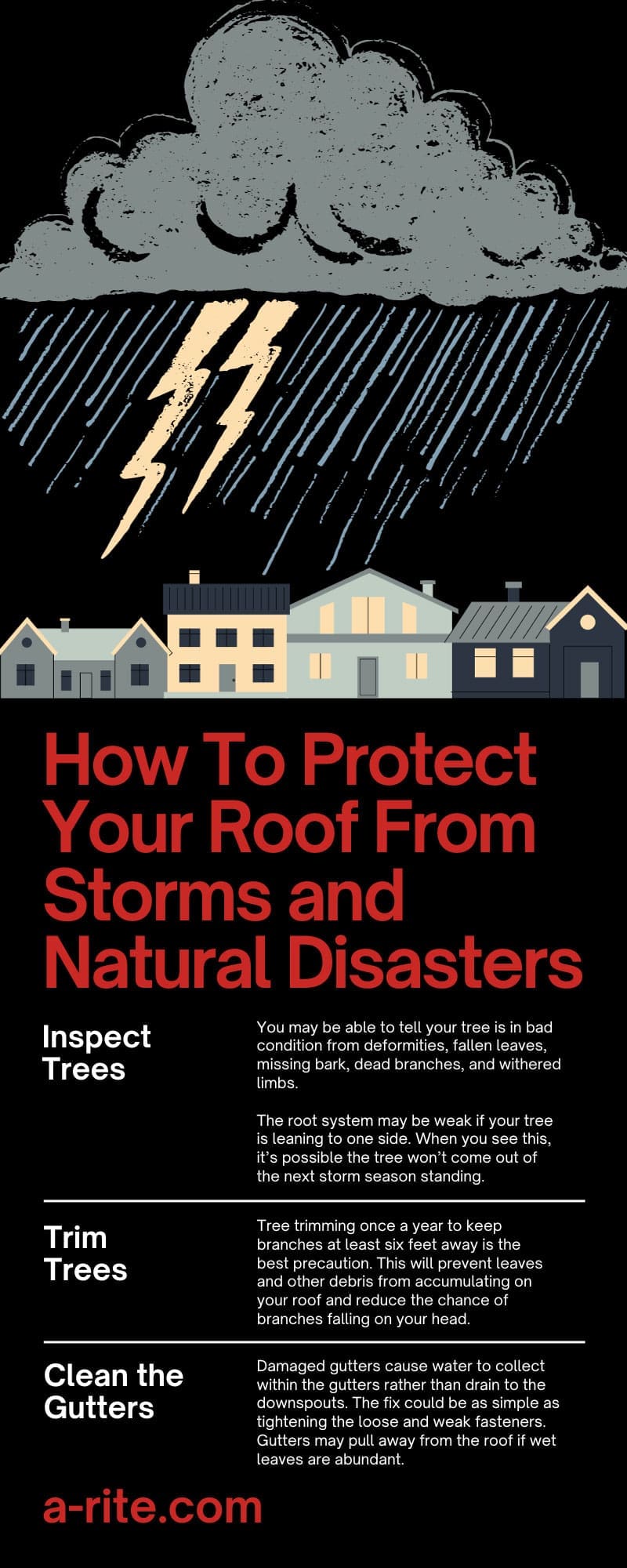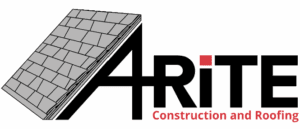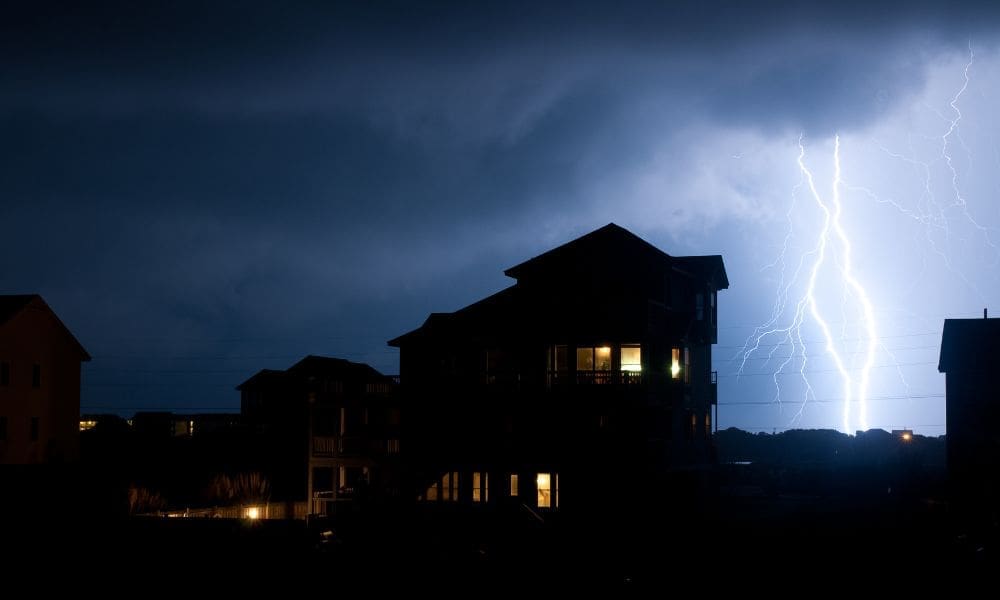You may feel helpless when protecting your home, particularly if Mother Nature is the culprit. Tumultuous weather can rear its ugly head throughout the year. Whether rain, snow, or ice come, your roof will take the brunt of the damage. However, there is hope when you learn how to protect your roof from storms and natural disasters.
Weather Concerns
Fortunately, you won’t experience certain natural disasters in the Midwest. Hurricanes and earthquakes do not make their presence known in the Badger State, but homeowners should have four types of weather occurrences on their radar.
Rain
Your roof will be in a tough battle when heavy rain comes rolling in. Roofing components may deteriorate with prolonged exposure to heavy rain. Roofing problems after a storm might include missing shingles and rotted underlayment from water seepage.
Strong Winds
One thing you can expect throughout the year is wind gusts. Winds as low as 25 mph can cause large branches to sway and wires to whistle, whereas winds that surpass 65 mph could lead to severe structural damage. But what happens in between those figures?
A stiff breeze under 45 mph is a nuisance but generally won’t do any serious harm. Even if the wind may rearrange some patio furniture, you shouldn’t have to worry about severe damage to you or your neighbor’s property.
The threat of real damage is possible at speeds of 45 mph and higher. These are sufficient to dislodge loose shingles and bring down fragile trees or branches, posing a threat to your house.
Winds above 55 mph may cause significant property damage. Anything approaching or surpassing highway speed limits could rip off roof tiles or toss debris around like a ragdoll.
When winds reach 65 mph or more, it’s not a matter of if there will be some damage but how bad it will be. Strong winds of 75 mph or more may cause extensive destruction, including downing trees, overturning vehicles, and breaking windows in houses and businesses.
Hail
When rain and winds are prevalent, hail lurks in the shadows. Similar to wind, hail damage has a wide range of outcomes dependent on the size of the hail, its velocity, and the roof’s quality. You should feel lucky enough to walk away from a hailstorm if only aesthetic damage to the roof exists. If the hail pounds a roof hard enough that it ruins its function, you could be in a world of hurt.
Ice Dams
Winter weather is the biggest concern for those in the area, as it may damage your roof significantly. Although snowflakes appear light and fluffy, accumulation can destroy flat, slanted roofs due to excess weight. Working with a seasoned roofer who can construct the optimal roof for your environment and guarantee adequate drainage is the best way to avoid the burden of excessive snowfall.
The Inspection Period
Before you take any action to protect your roof from the elements, know what you’re up against and what you can do about it. The first thing on the docket is a roof inspection and a home insurance policy review.
Detailed Roof Examination
Regular maintenance and inspections are essential to ensure your roof is in it for the long haul, especially before storm seasons. The idea of thousands of dollars worth of easily preventable roof repairs won’t sit right with you for a long time.
A professional roof inspector can look at your roof and home in any questionable areas that could be problematic if a large storm hits. They can check everything carefully and fix whatever they notice to ensure the home can withstand the punishment.
Reading the Insurance Policy
Storm coverage in insurance policies can be rather finicky, so make it your mission to give it a thorough look over. Most importantly, you’ll want to verify it is up to date and that you understand what it covers.
It’s smart to have several copies of the policy if you don’t have digital access. Additionally, it can help to have current photographs of your roof and after shots once the storm does its damage.
Documentation detailing the extent of the storm’s damage may help speed the claims process and increase the likelihood of a positive resolution.
Plan of Action
Now is the time to act and do what’s needed to protect your home. While storms are unpredictable, there are some things you can control by doing the following actions.
Inspect Trees
Heavy gusts may topple weak or sick trees, so it’s important to check the health of any trees near your home. Trees will show when they aren’t in the best shape.
You may be able to tell your tree is in bad condition from deformities, fallen leaves, missing bark, dead branches, and withered limbs.
The root system may be weak if your tree is leaning to one side. When you see this, it’s possible the tree won’t come out of the next storm season standing.
Remember that danger may come from trees everywhere, not only close to your home. They may be much higher than they first looked, posing a serious threat to your roof if they fall in the wrong direction.
Trim Trees
After your systematic walkthrough of any trees surrounding the home, you’re ready to remove any limbs or branches hanging dangerously close to the home.
Even if a branch isn’t directly hanging over the roof, that doesn’t mean a gust of wind can’t guide it in that direction. When the wind blows, branches near the roof might cause substantial damage by splitting roof timbers or bursting through the roof.
Tree trimming once a year to keep branches at least six feet away is the best precaution. This will prevent leaves and other debris from accumulating on your roof and reduce the chance of branches falling on your head.
Clean the Gutters
Clogged gutters and downspouts hinder rainwater from flowing from your roof to the ground. Because of this, water may pool and eventually seep beneath the shingles and into your house.
Damaged gutters cause water to collect within the gutters rather than drain to the downspouts. The fix could be as simple as tightening the loose and weak fasteners. Gutters may pull away from the roof if wet leaves are abundant.
Move Furniture Into Storage
Heavy winds may cause damage to your home and personal property by whipping lawn furniture, grills, and other loose items. Try to keep these things from becoming dangerous projectiles and damaging your property or someone else’s by securing or storing them.
This may be especially crucial in regions prone to natural disasters. Broken windows and an unexpected shift in air pressure within the house are both possible results of flying debris.
Knowing how to protect your roof from storms and natural disasters guarantees that your home’s roof will be ready to fend off the heaviest storms. Getting A-Rite Construction and Roofing’s GAF roofing products is the first step in making this a reality. With GAF products, you can have peace of mind knowing that the most current and up-to-date products are protecting your home.





